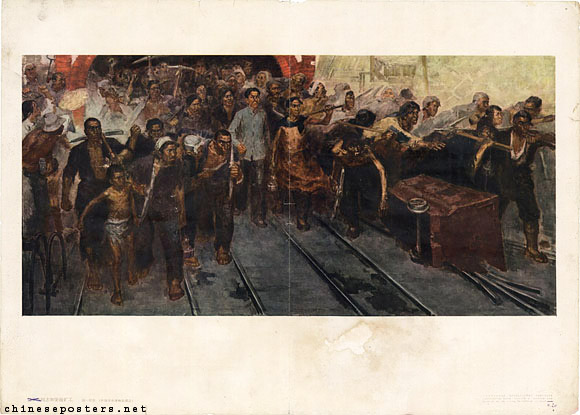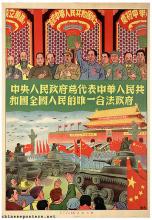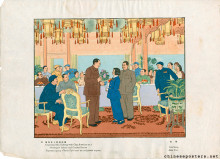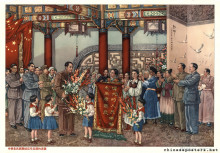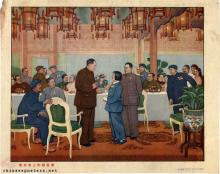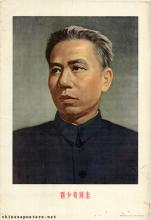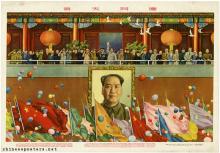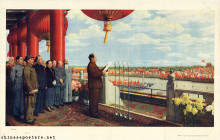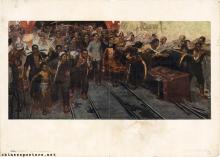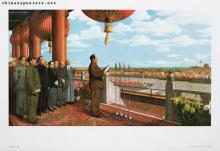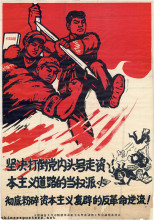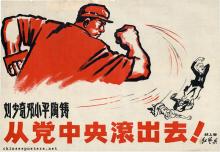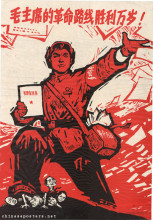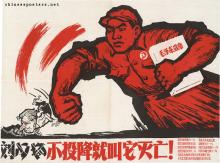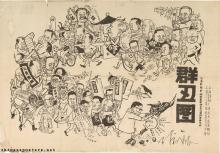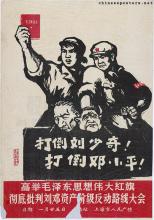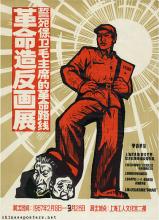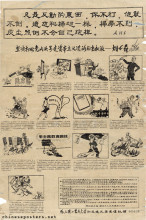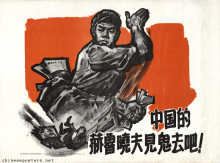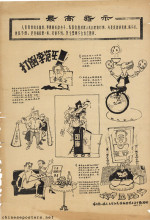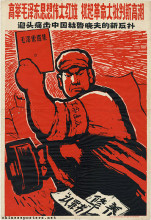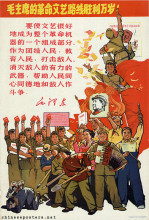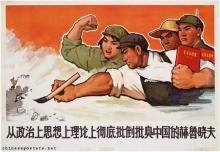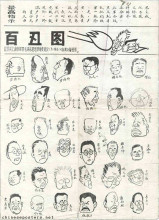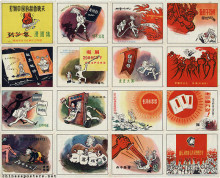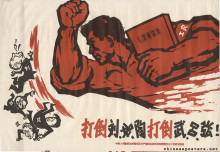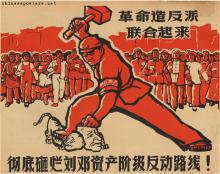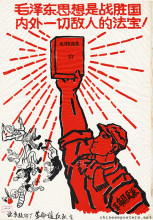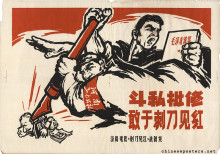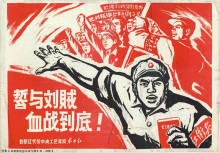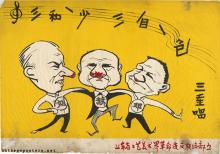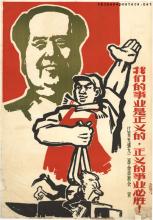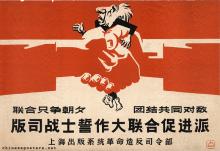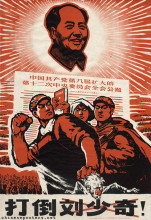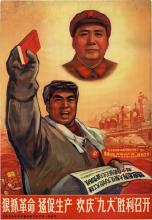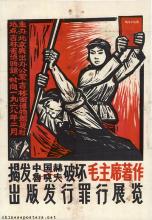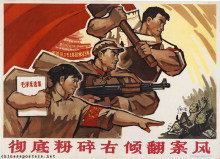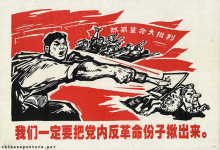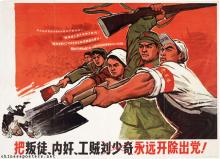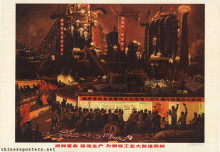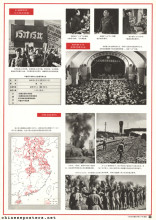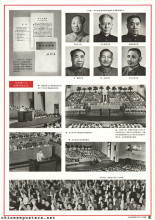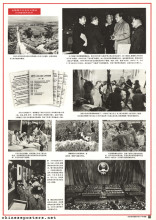Comrade Liu Shaoqi and the Anyuan miners, 1962
In the late 1950s, a series of large oil paintings was commissioned for the Museum of the Chinese Revolution, that was to open in Beijing on July 1, 1961. Artists and subjects were carefully selected, as the paintings had to represent the official view on the history of the Party and the Chinese revolution. Of the Party leaders, Mao was of course given prominence, although his position had become less untouchable because of the failure of the Great Leap Forward.
One of the commissioned paintings featured Liu Shaoqi, second in the Party hierarchy and seen by many as Mao’s evident successor, as the leader of an important strike of the coal miners in Anyuan, 1922. Artist Hou Yimin made several trips to Anyuan, to study the mines and to find models for the workers he would portray. Liu Shaoqi is in the center of the composition, standing out as determined leader. Around him, the coal miners are portrayed more realistically and individually than in similar paintings of the time. The painting got good reviews, and was reproduced as a small poster in 1962.
At the start of the Cultural Revolution, Liu Shaoqi was branded as an enemy of the state, the "supreme leader of a black gang". In 1967, Red Guards in Beijing organized a conference titled "Cut Off Liu Shaoqi’s Black Hand in the Art World - Thorougly Eliminate the Poisonous Weeds Glorifying Liu Shaoqi". Leaders of the arts world, museum officials and artists who had produced "dog portraits" of Liu Shaoqi were forced to attend public sessions of criticism and humiliation. Hou Yimin’s painting was a principal target. In order to erase Liu’s leading role in the Anyuan strike and give Mao a role he had not fulfilled in reality, the painting "Chairman Mao goes to Anyuan" was created. It replaced Hou’s painting in the Museum of the Chinese Revolution, was promoted as a model painting by Jiang Qing and other leaders of the Cultural Revolution, and reproduced as poster, with an estimated nine hundred million copies printed.
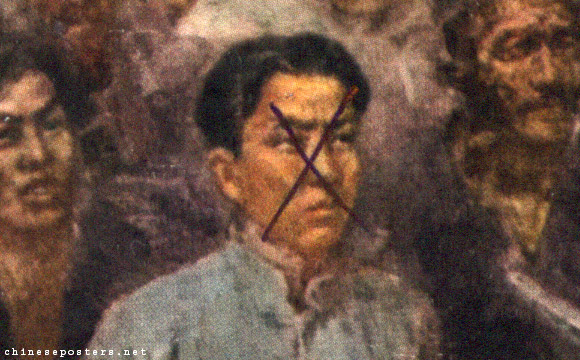
Liu Shaoqi’s face crossed out.

The characters 刘少奇 (Liu Shaoqi) crossed out.
Hou Yimin’s painting was destroyed in or around 1968. Even possesion of a poster reprint of the painting could be dangerous. The print shown here, from the first edition published by the Beijing Renmin meishu chubanshe in 10.000 copies, has Liu Shaoqi’s face and the characters 刘少奇 (Liu Shaoqi) crossed out. This was a way to demonstrate disagreement with the "renegade and traitor". In a similar way, anti-Liu Shaoqi posters were published with the 刘少奇 characters crossed out already in print.
In 1979, Hou Yimin painted a new version of the painting, which is now in the collection of the Museum of the Chinese Revolution.
Julia F. Andrews, Painters and Politics in the People’s Republic of China 1949-1979 (Berkeley, etc.: University of California Press, 1994) - online at http://ark.cdlib.org/ark:/13030/ft6w1007nt/
Chang-tai Hung, Mao’s New World. Political Culture in the Early People’s Republic (Ithaca, London: Cornell University Press, 2011)
Elizabeth J. Perry, "Reclaiming the Chinese Revolution", Journal of Asian Studies 67:4 (2008), 1147-1164
